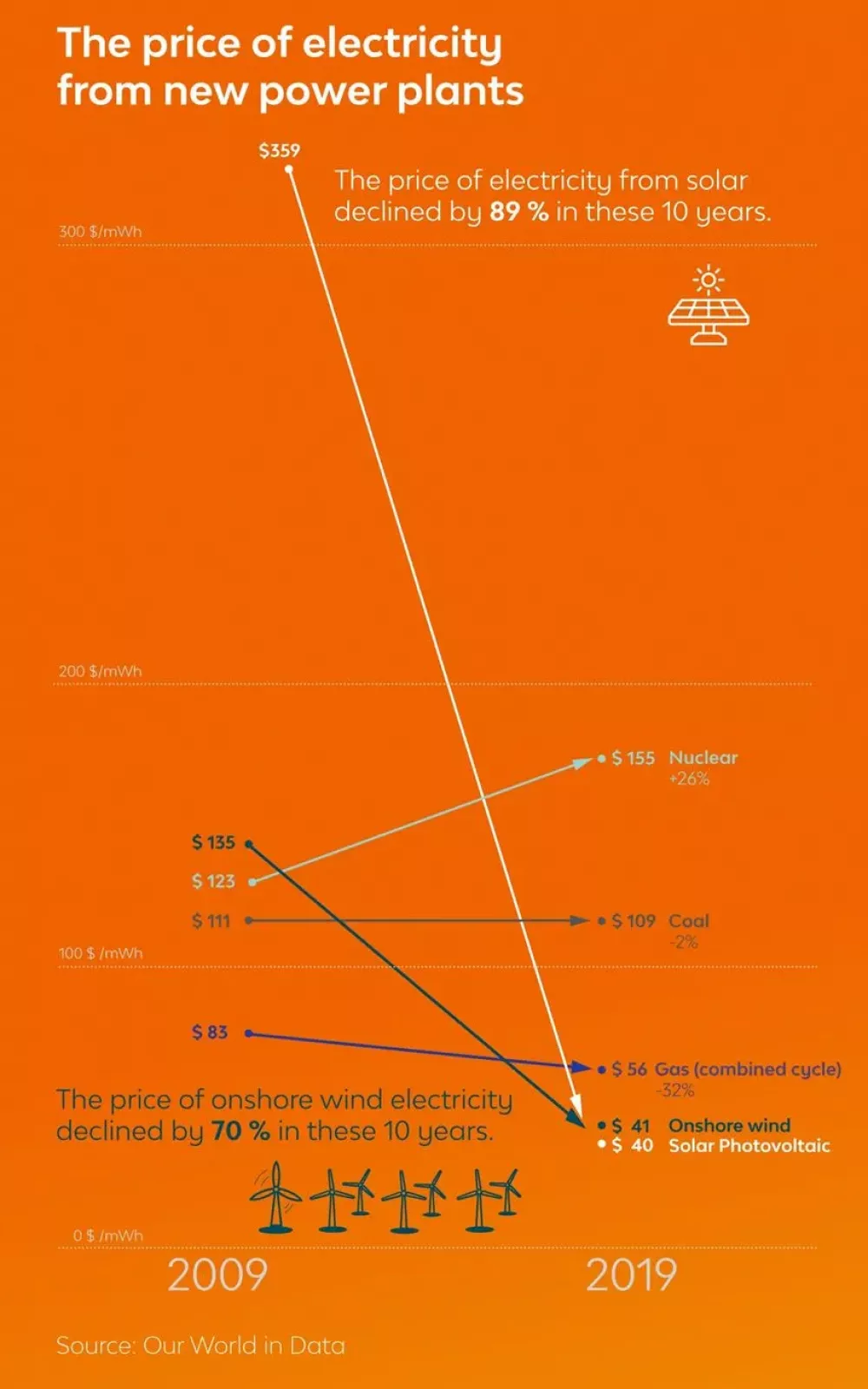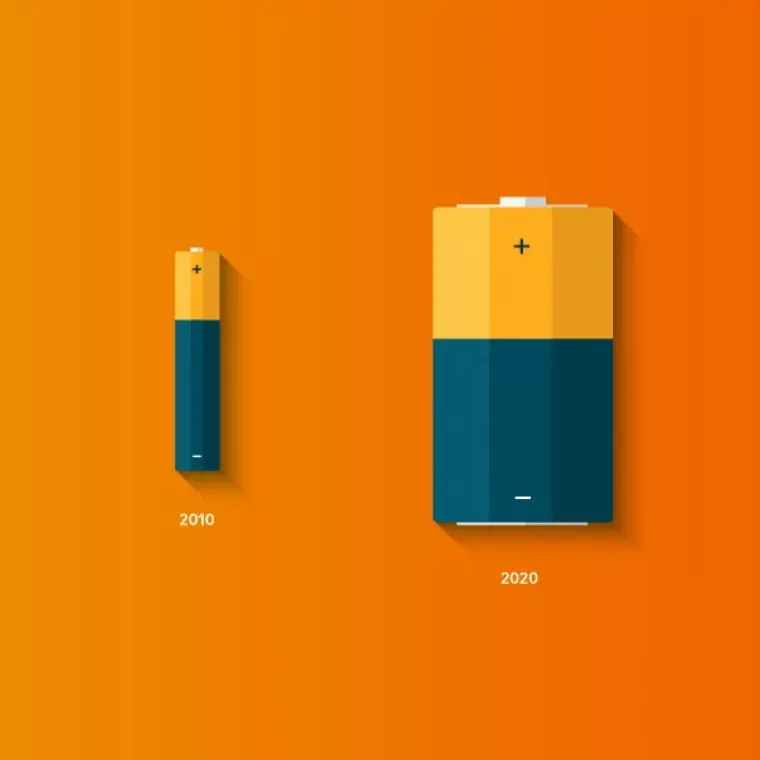Why the price of photovoltaic electricity is falling so steeply, and what it means for the automotive segment

Indeed, electric cars are going to be much greener in the future. That’s because the fundamental trend of the world's energy industry is quite clear.
When we look at the price changes of the various sources of electricity over the past decade, three things will strike us:
- Photovoltaic electricity is becoming significantly cheaper.
- Coal-fired electricity costs about the same throughout the entire period.
- Nuclear electricity is becoming noticeably more expensive.
How is that possible? The Oxford Data Lab, which published the findings in the online journal Our World in Data, explains this phenomenon by the existence of a learning curve - for every increase in capacity, the price of technology drops by a certain percentage at the same time.
Solar panels are trending
Let's take a close look at the graph mentioned above. It shows that the evolution of the price of electricity in newly built power plants is measured by the LCOE - the structured cost of energy. This is the price at which a power plant would have to sell its electricity for to cover the costs of building it and operating it over its entire lifetime. This gives us a measure of how cheap or expensive a particular energy source really is.
The longest red curve shows the evolution of the cost of electricity from solar panels, with a steep drop of 89%. Solar panels, once expensive to produce in Germany, are much cheaper now when they are produced in China.
The black curve shows the price of electricity from coal, which has remained virtually unchanged for ten years. Even more striking is the rise in the price of nuclear power.
Expensive fossil electricity
Why is this happening? The price of solar electricity follows a learning curve, while the price of coal electricity follows no such curve. Every time the photovoltaic panel capacity doubles in the world, the price of these technologies drops by 20%. Another renewable resource, wind, follows a similar learning curve. The average price per megawatt-hour of electricity generated from onshore wind has fallen by a whopping 70% in ten years.
The gap between expensive fossil electricity and ever cheaper renewable electricity will grow in the future. This creates a good argument for increasing investment in renewable technologies. The future therefore belongs to electromobility, as it will be both the most sustainable and the most affordable option at the same time. And companies operating in the automotive segment are already preparing for it, LeasePlan included.
We are ready for the future as we continue to expand our range of electric and hybrid vehicles on offer. It doesn't matter if you need just one car for a small business, or an entire corporate fleet of electric cars.
While in 2010 all batteries produced in the world (including large storage facilities) had a capacity of only 0.5 GWh, last year it was already 526 GWh. The Czech power system would survive on such capacity for more than two days.
Battery revolution
Energy storage has followed a learning curve similar to the one of photovoltaics since the beginning. The cost per kilowatt-hour of battery capacity has dropped 89% since 2010.
Price decrease of battery packs has been running at an average rate of 20% per year over the past decade. This rate is unlikely to be sustained, yet by 2023 a threshold is likely to be crossed - the cost of producing an electric vehicle will intersect with the average cost of producing a petrol vehicle. This will lead to much higher sales volume, further making the production cheaper. In short, the future belongs to electric mobility. Electric cars are likely to be cheaper than petrol cars in 2030.




